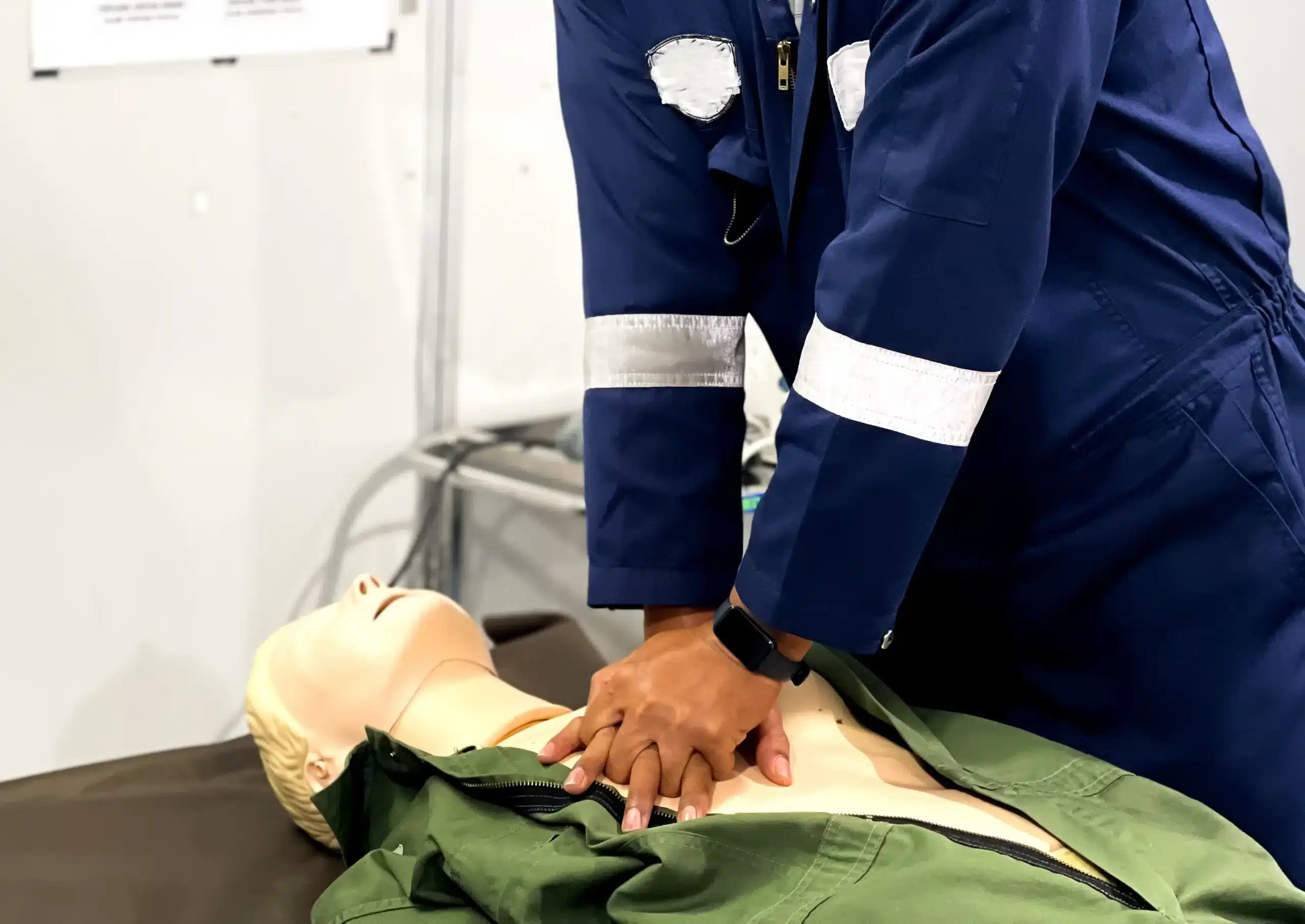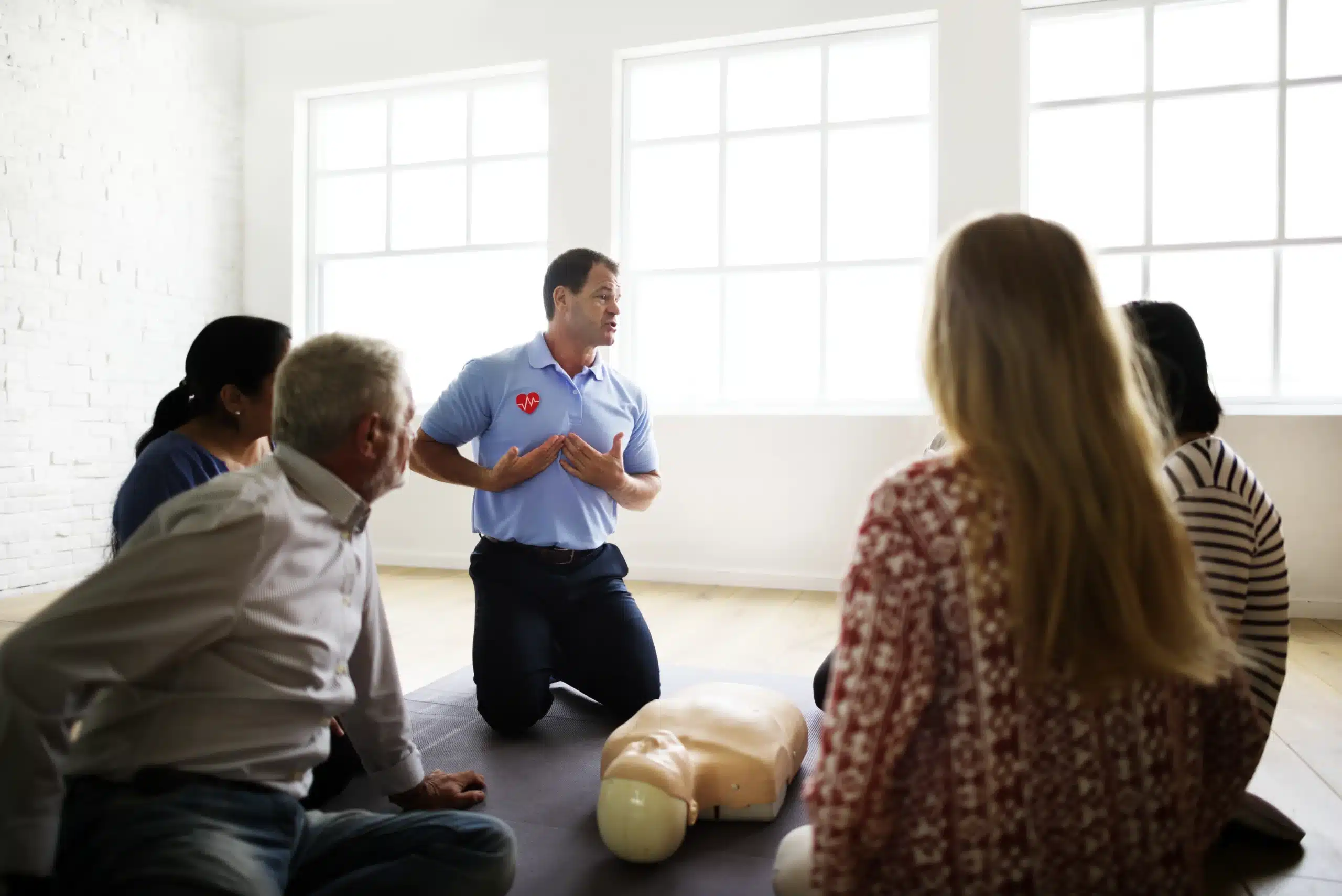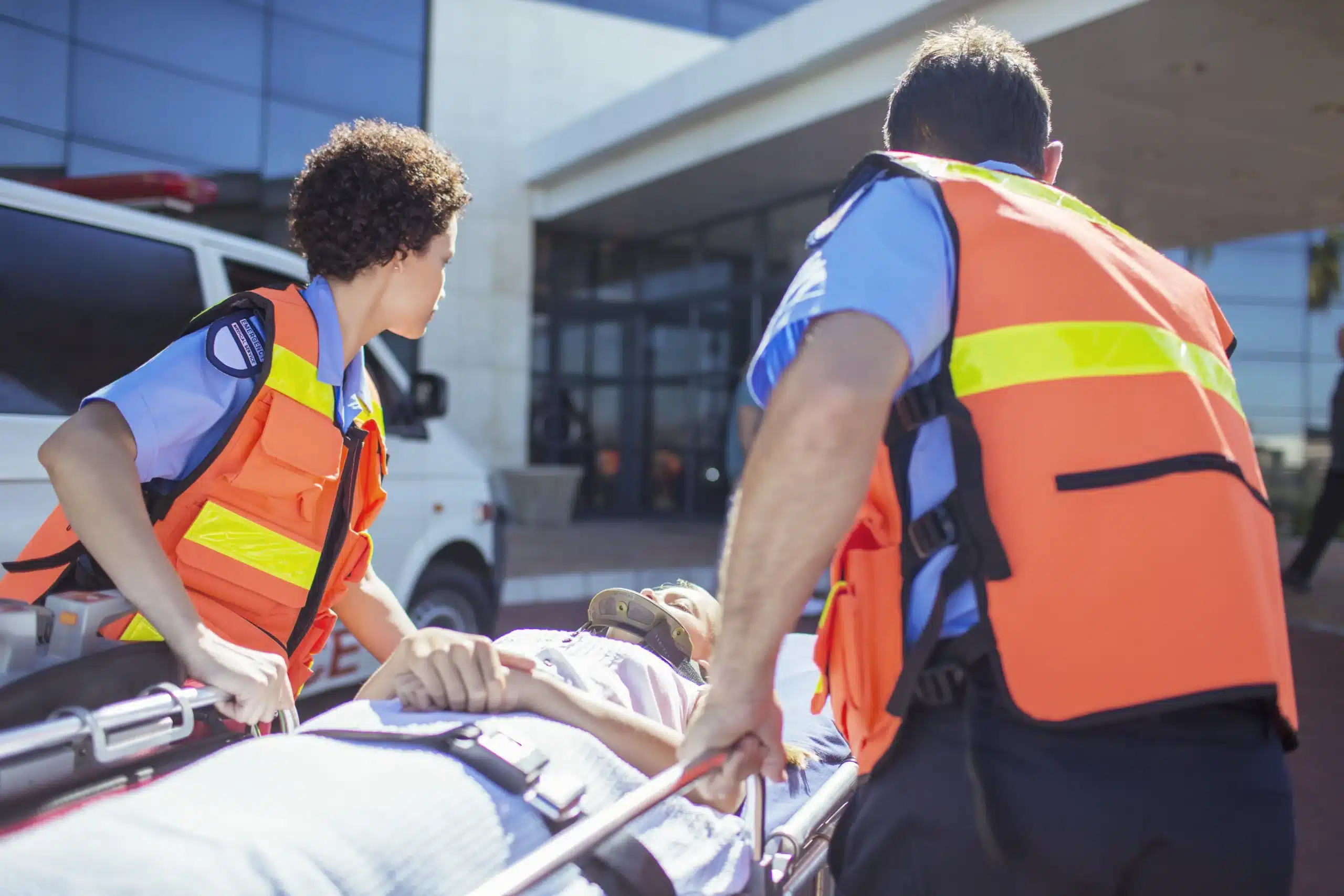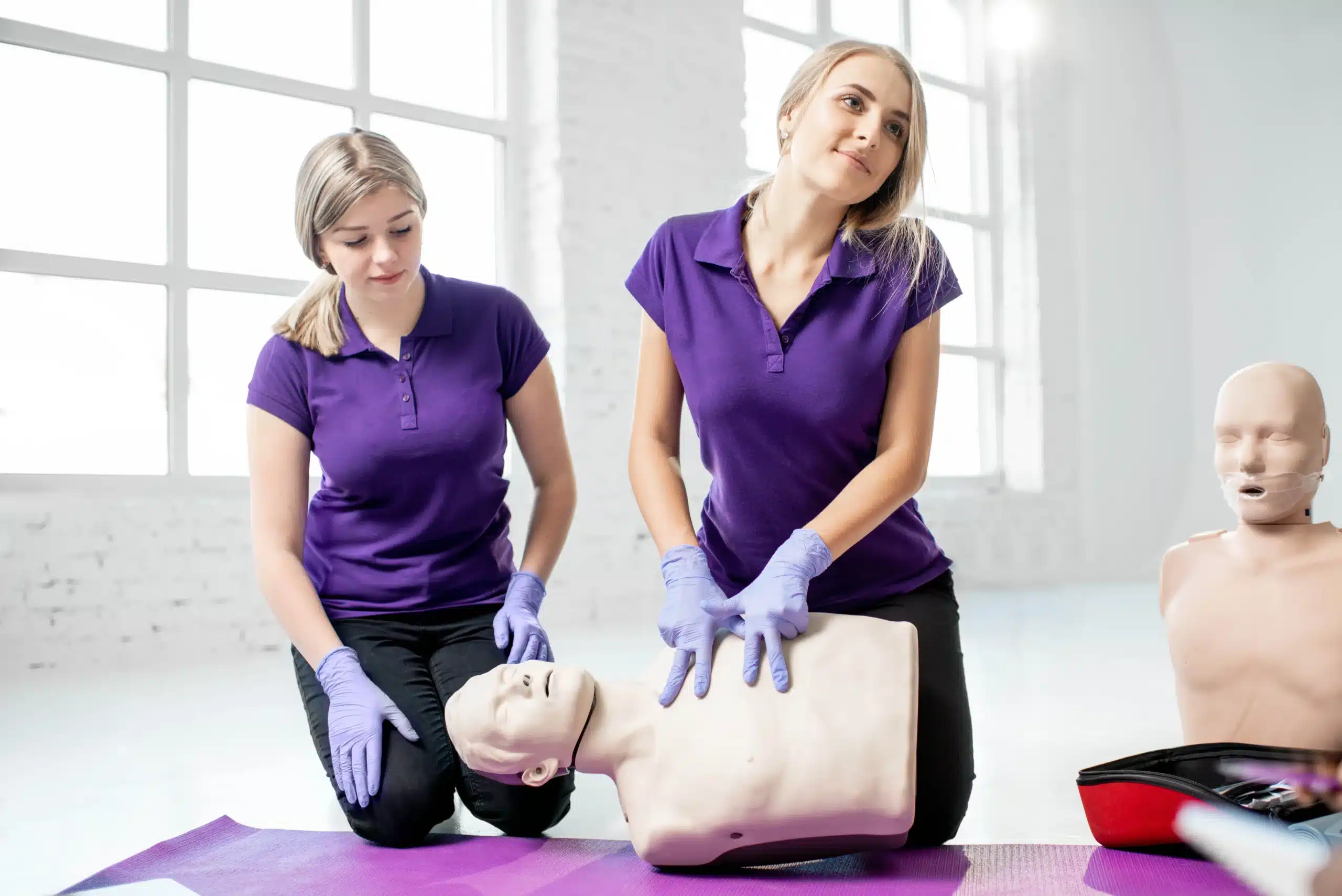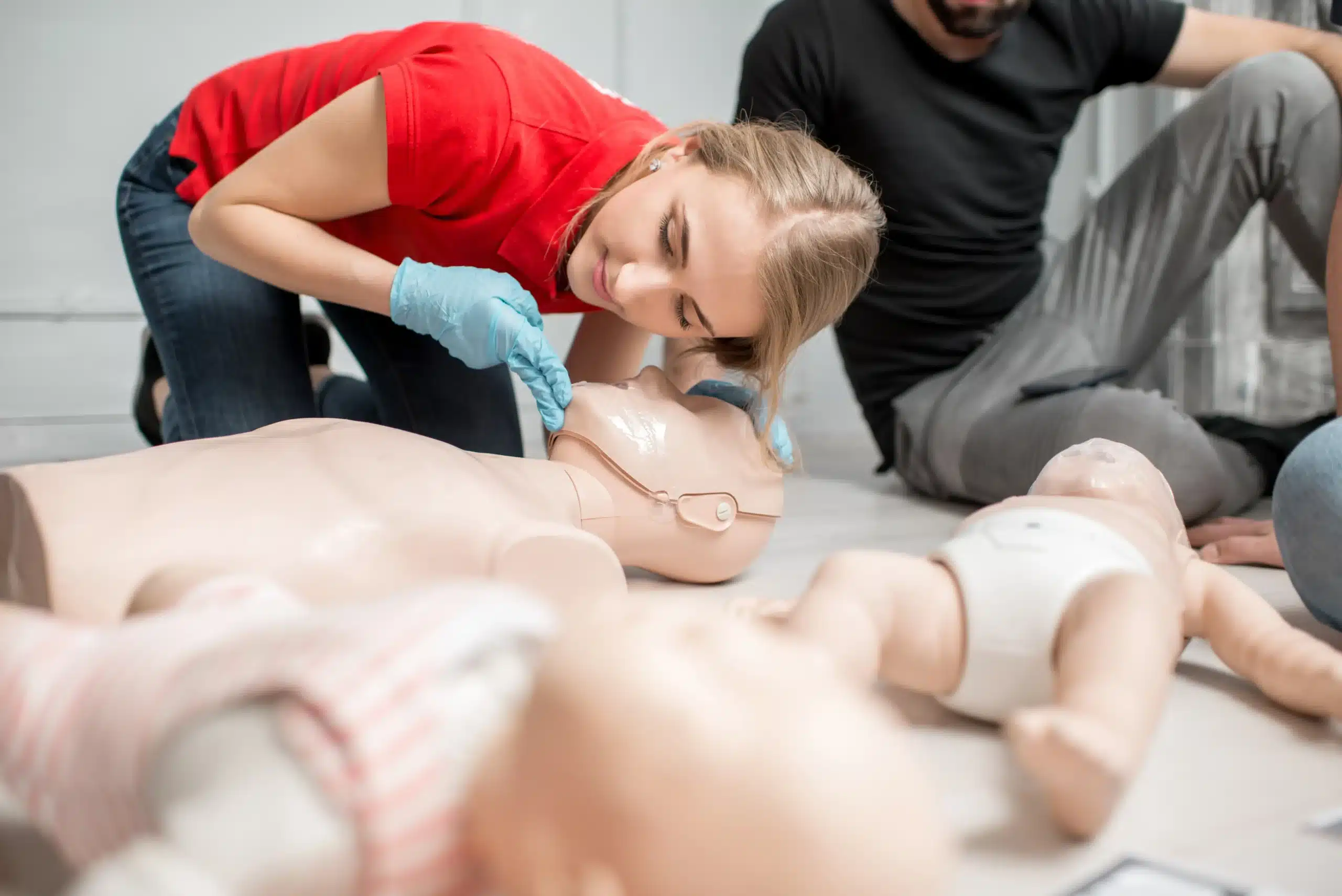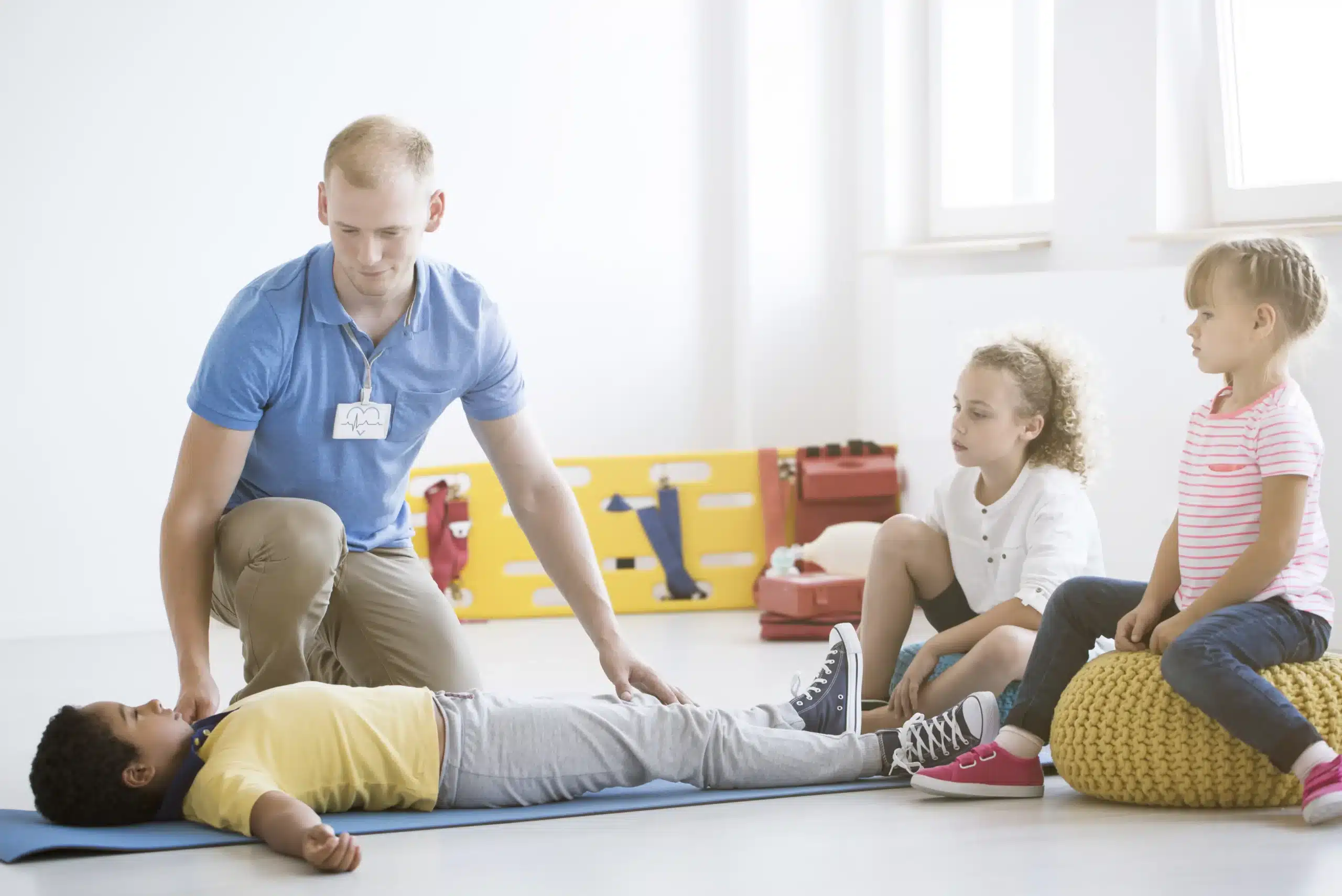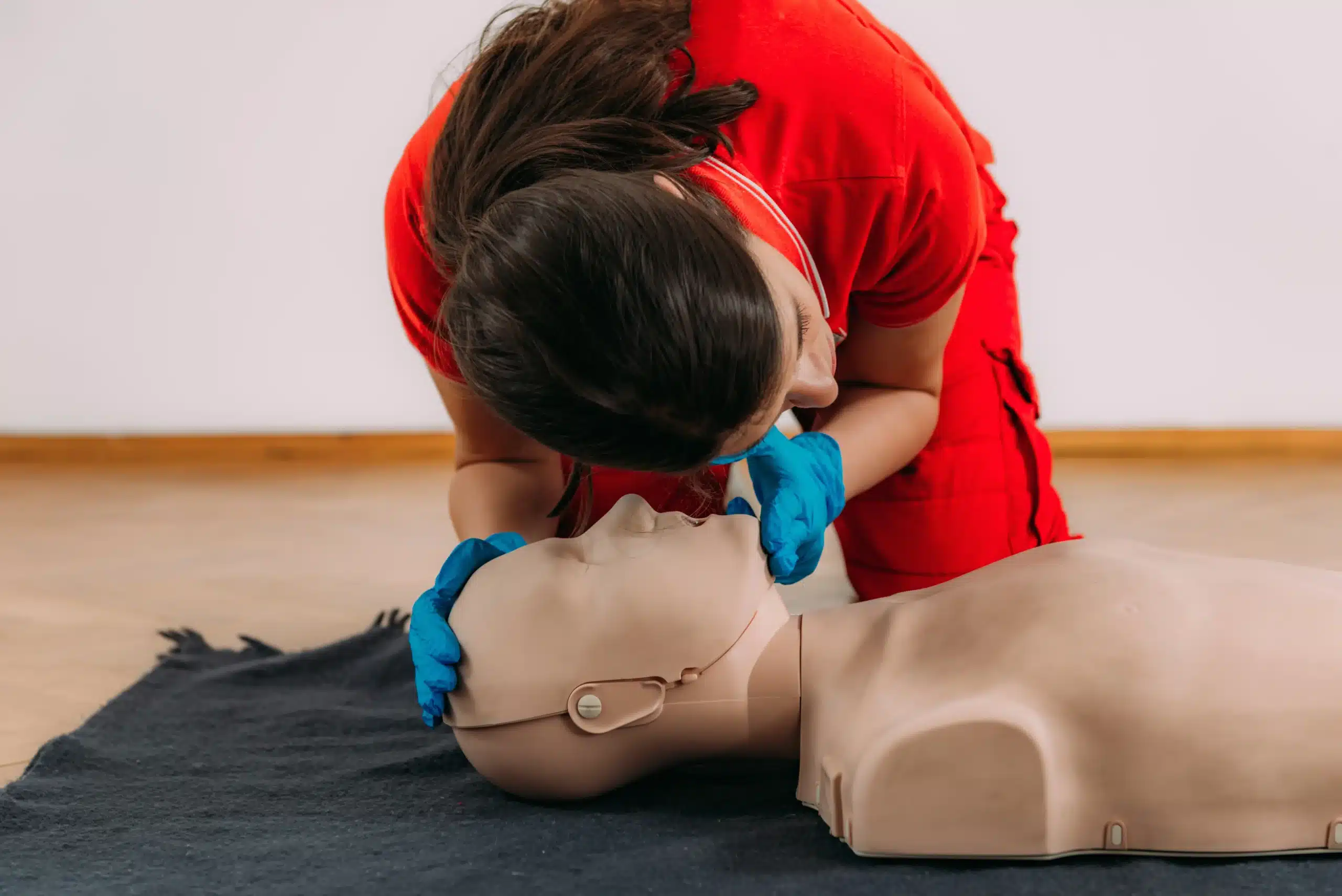Life as a healthcare provider is busy, but maintaining your BLS certification is essential. This guide streamlines the BLS recertification process, making it easier to find the right course for your schedule and learning style. Whether you’re searching for “BLS recertification near me” options or exploring online alternatives, we’ll cover everything you need to know. From understanding the importance of recertification to preparing for the course and staying up-to-date on the latest guidelines, we’ve got you covered.
Key Takeaways
- Maintain your life-saving skills with BLS Recertification: Regularly refresh your BLS skills and knowledge to confidently handle emergencies. Choose a trusted provider like the American Heart Association, the American Red Cross, or Safety Training Seminars.
- Select the best learning format for your needs: In-person training offers hands-on practice, while online courses provide flexibility. Consider your learning style and schedule when making your choice.
- Stay ahead of the curve with continuous learning: Regularly review updated BLS protocols and plan your recertification in advance to avoid any lapse in your credentials. Take advantage of available resources and effective study strategies to ensure you’re always prepared.
What is BLS Recertification?
BLS Recertification is how healthcare providers and other qualified professionals keep their Basic Life Support skills sharp. It’s a refresher course and evaluation that ensures you’re up-to-date on the latest life-saving techniques. Since BLS certification is typically valid for two years, recertification is essential for maintaining your credentials and your ability to respond effectively in emergencies. Think of it as a tune-up for your skills, making sure you’re always ready to provide the best possible care.
What is Basic Life Support (BLS)?
Basic Life Support (BLS) encompasses the essential techniques used in medical emergencies. From performing CPR and using an AED to managing a patient’s airway, BLS skills are the foundation of emergency medical care. This training equips individuals with the knowledge and confidence to act quickly and effectively when every second counts, whether they are in or out of a healthcare setting. It’s about being prepared to make a real difference in critical situations.
Why is Recertification Important?
Staying current with the latest BLS protocols is crucial for providing the highest quality care. BLS recertification isn’t just about maintaining your certification; it’s about refining your skills and ensuring you’re familiar with any updated guidelines. Regular recertification reinforces best practices for chest compressions, rescue breaths, and recognizing when immediate BLS intervention is necessary. Ultimately, it increases your ability to provide effective care and potentially save lives. Recertification demonstrates your commitment to maintaining a high standard of care and staying at the forefront of life-saving techniques. It also shows patients and employers that you take your role seriously and prioritize continuous learning.
Find BLS Recertification Courses Near You
Finding the right BLS recertification course requires a bit of research to ensure it meets your needs and schedule. Here’s how to find a course that works for you:
Use Online Search Tools Effectively
Start your search with online search engines like Google, Bing, or DuckDuckGo. Search terms like “BLS recertification near me,” “BLS renewal courses,” or “AHA BLS recertification [your city]” can help you discover local providers. Many organizations, like the American Heart Association, offer search features on their websites to filter by location, course type, and schedule. This makes it easy to pinpoint classes that fit your requirements.
Evaluate Local Training Centers
Once you have a list of potential training centers, evaluate each one. Consider factors like course format (online, in-person, or blended), cost, and the training center’s reputation. Safety Training Seminars offers a helpful guide for finding BLS training in your area. It’s important to choose a provider that fits your learning style and schedule, so think about whether you prefer hands-on, in-person instruction or the flexibility of online learning. Location and available dates also play a key role in selecting the right course.
Assess Provider Credibility
Before committing to a course, assess the provider’s credibility. Look for providers affiliated with reputable organizations like the American Heart Association or the American Red Cross. Researching client testimonials, reviews, and case studies provides valuable insights into the quality of training. A well-regarded provider is more likely to deliver effective and comprehensive training that prepares you for real-world scenarios. Also, confirm that the certification will be widely accepted in your field.
Top BLS Recertification Providers
Finding the right BLS recertification provider is key to a smooth and valuable learning experience. Here are a few reputable organizations and companies that offer recertification courses:
American Heart Association (AHA)
The American Heart Association is a trusted name in CPR and BLS training. Their BLS recertification courses are designed for healthcare providers and cover essential life-saving techniques for adults, children, and infants. AHA certification is widely recognized and respected in the medical field.
American Red Cross
The American Red Cross offers BLS renewal and recertification courses that are convenient and comprehensive. These courses help healthcare professionals refresh their skills and extend their certification for another two years. The Red Cross is a well-established organization with a long history of providing reliable training.
Safety Training Seminars
Safety Training Seminars focuses on providing high-quality BLS certification and recertification courses. They emphasize key skills needed for effective emergency response, giving participants the confidence to handle critical situations. For those in or near San Joaquin County, Safety Training Seminars offers the lowest prices and convenient registration for BLS, ACLS, and PALS certifications. They also offer EMSA Child Care Health & Safety training.
National CPR Foundation
The National CPR Foundation specializes in BLS renewal for healthcare professionals who already hold BLS certification. Their courses are designed to refresh existing knowledge and ensure participants stay up-to-date with the latest emergency care practices. The Foundation’s focus on renewal makes it a convenient option for maintaining certification.
ProTrainings
ProTrainings offers online BLS certification and recertification courses, providing a flexible learning experience for busy professionals. Their online format allows you to complete the training at your own pace, fitting it around your schedule. ProTrainings’ online platform makes recertification accessible and convenient.
Choose Between In-Person and Online BLS Recertification
Deciding between in-person and online BLS recertification depends on your learning style and schedule. Both formats cover the same core material and result in a valid certification, but the learning experience differs. Let’s explore the pros and cons of each option to help you make the best choice.
Benefits of Hands-On Training
In-person BLS recertification offers hands-on learning with a certified instructor. This is invaluable for mastering essential skills like CPR and AED use. Practicing compressions on a manikin and physically working through various emergency scenarios builds muscle memory and confidence. The in-person setting also allows for immediate feedback from instructors, ensuring you’re performing techniques correctly. This real-time interaction and the opportunity to ask questions can significantly improve your preparedness for real-life emergencies. Safety Training Seminars offers hands-on BLS training and certification. If you learn best by doing and value direct interaction, in-person training might be right for you.
Advantages of Online Flexibility
Online BLS recertification provides flexibility. You can complete the coursework at your own pace and on your own schedule. This format is particularly convenient for those juggling work, family, or other commitments. Online courses often incorporate interactive elements like videos and simulations to reinforce learning, even without a physical classroom. ACLS Medical Training offers a comprehensive online BLS and ACLS recertification bundle. This self-paced approach can be ideal for those who prefer to absorb information independently and revisit materials as needed.
Match the Format to Your Learning Style
The best BLS recertification format depends on your individual learning preferences. If you thrive in a hands-on environment and value face-to-face instruction, in-person training is likely the better choice. However, if you prefer flexibility and self-directed learning, an online course might be a better fit. Consider your schedule, learning style, and comfort level with technology when making your decision. Also, research different providers to compare course formats, costs, and resources. Safety Training Seminars offers a guide to finding BLS training near you. This will help you find the option that best suits your needs.
BLS Recertification Costs and Options
Knowing the price range for BLS recertification and what influences cost can help you find the best value. Let’s break down typical expenses, factors affecting pricing, and ways to save.
Typical Price Ranges
BLS recertification courses typically cost around $55, though prices vary based on location and training center. Safety Training Seminars offers highly competitive pricing for BLS recertification in Stockton, CA, and we encourage you to compare our prices with other providers. We’re committed to providing affordable, high-quality training. Our low price guarantee ensures you’re getting the best possible value.
Factors Influencing Course Costs
Several factors influence the overall cost of your BLS recertification. The quality of instruction and course materials is a major consideration. Experienced instructors, comprehensive resources, and updated training equipment all contribute to a more effective learning experience.
Hands-on practice is another key factor. Courses with ample opportunity for practical application and skill development may have different costs associated with equipment and instructor time. The format of the course (in-person vs. online) can also affect the price. In-person training often involves facility costs, while online courses may offer more flexibility.
Available Discounts and Package Deals
Look for discounts and package deals to make your recertification more affordable. Many providers, including Safety Training Seminars, offer discounts for group registrations or when you bundle BLS recertification with other courses like ACLS or PALS. Check with your preferred training center for any ongoing promotions. Bundling your BLS recertification with other certifications, such as ACLS and PALS, may also provide cost savings.
What to Expect During Your BLS Recertification
Getting recertified in Basic Life Support (BLS) is a straightforward process. Here’s what you can expect:
Course Structure and Duration
BLS recertification courses typically follow a blended learning format, combining online coursework with in-person skills practice and testing. The in-person portion usually takes between 2.5 and 4.5 hours, depending on the provider and any specific requirements. This hands-on training is essential for mastering the necessary skills.
Key Skills and Updated Protocols
During your BLS recertification course, you’ll review and practice core life-saving skills. This includes high-quality chest compressions, giving rescue breaths, and recognizing when someone needs BLS. The course also covers updated protocols and guidelines from organizations like the American Heart Association, ensuring your skills are current. This refresher is crucial for positive outcomes in emergencies.
Assessment Methods and Certification Process
Recertification involves completing the required coursework (online and in-person) and passing a skills test. This test demonstrates your competency in the techniques covered. After successfully completing these requirements, you’ll receive your BLS certification card, valid for two years. You’ll need to recertify again after those two years to maintain your credentials.
Prepare for Successful BLS Recertification
Getting ready for your BLS recertification involves a few key steps. By understanding the requirements and adopting effective study habits, you’ll be well-prepared to renew your skills and maintain your certification.
Meet Prerequisites and Eligibility Requirements
Before signing up for a BLS recertification course, confirm you meet all the prerequisites. Generally, this includes holding a current, valid BLS certification from a recognized provider, such as the American Heart Association (AHA) or the American Red Cross. If your certification has lapsed, you might need to take a full BLS course instead of a recertification class. Check with your chosen training center or certifying organization for their specific requirements. When choosing a provider, consider factors like reputation, course content, instructor quality, hands-on practice opportunities, certification validity period, and cost.
Effective Study Strategies
Set yourself up for success with a solid study plan. Review the most recent BLS guidelines and protocols, especially any updates since your last certification. The AHA website offers current information and resources. Practice essential skills, like CPR and AED use. Many training centers offer refresher courses or practice sessions. Consider studying with a friend or colleague to reinforce your learning and make the process more interactive.
Tips for Acing Your Recertification
Don’t wait until the last minute. Review the course materials thoroughly, paying close attention to any changes in BLS guidelines. Take practice tests to gauge your knowledge and pinpoint areas for focused study. Arrive at your recertification course rested and prepared. Bring any required materials, including your current BLS provider card. During the course, actively participate, ask questions, and take full advantage of the hands-on practice. Remember, the goal of recertification is to refresh your life-saving skills, ensuring you’re prepared to respond confidently in an emergency.
Maintain Your BLS Certification Long-Term
Keeping your BLS certification current isn’t a one-time thing; it requires ongoing attention. This section covers how to stay certified and up-to-date with the latest life-saving techniques.
Certification Validity and Renewal Timing
BLS certification, vital for healthcare providers and first responders, has a limited validity period. Your BLS certification typically lasts for two years, with no grace period after expiration. To maintain your certification, plan to retake the course and pass the exam before your current certification expires. Check with your certifying organization, such as the American Heart Association, for their specific renewal policy. While there might be a small window for renewal after the expiration date, proactive scheduling is always the best approach.
Stay Informed About BLS Protocol Updates
BLS guidelines evolve to reflect the latest medical research and best practices. Staying current with these updates is crucial for providing effective emergency care. Regularly review updated guidelines from reputable sources like the American Heart Association to ensure you’re always prepared to deliver the most effective care. This proactive approach not only helps with recertification but also ensures you’re equipped to handle real-world emergencies with confidence. If you aren’t familiar with the latest protocols, you might feel less prepared during your recertification.
Related Articles
- BLS Renewal in Lodi: Your Go-To Guide – Stockton CPR Classes
- BLS Certification in Stockton: Your Guide – Stockton CPR Classes
- BLS Renewal in Stockton: Your AHA Certification Guide – Stockton CPR Classes
- BLS Certification in Stockton: Your Comprehensive Guide – Stockton CPR Classes
- BLS for Healthcare Providers in Lodi: A Practical Guide – Stockton CPR Classes
Frequently Asked Questions
How often do I need to recertify in BLS? BLS certification is typically valid for two years. To maintain your credentials and stay up-to-date on the latest life-saving techniques, you’ll need to recertify every two years.
What’s the difference between BLS certification and recertification? Initial BLS certification teaches you the fundamental skills of Basic Life Support. Recertification is a refresher course for those with a current or recently expired BLS certification. It reinforces existing knowledge and introduces any updated protocols.
What if my BLS certification has already expired? If your BLS certification has expired, check with your certifying organization or training center. You might need to take a full BLS certification course rather than a recertification course, depending on how long it’s been expired.
Are online BLS recertification courses as good as in-person classes? Both online and in-person BLS recertification courses cover the same core material and lead to a valid certification. The best format for you depends on your learning style and schedule. Online courses offer flexibility, while in-person classes provide hands-on practice and direct interaction with an instructor.
How can I find affordable BLS recertification courses near me? Use online search engines and look for reputable providers like the American Heart Association, the American Red Cross, or Safety Training Seminars. Compare prices, look for discounts or package deals, and consider factors like location, schedule, and course format when making your decision. Safety Training Seminars offers a low price guarantee for courses in the Stockton, CA area.
